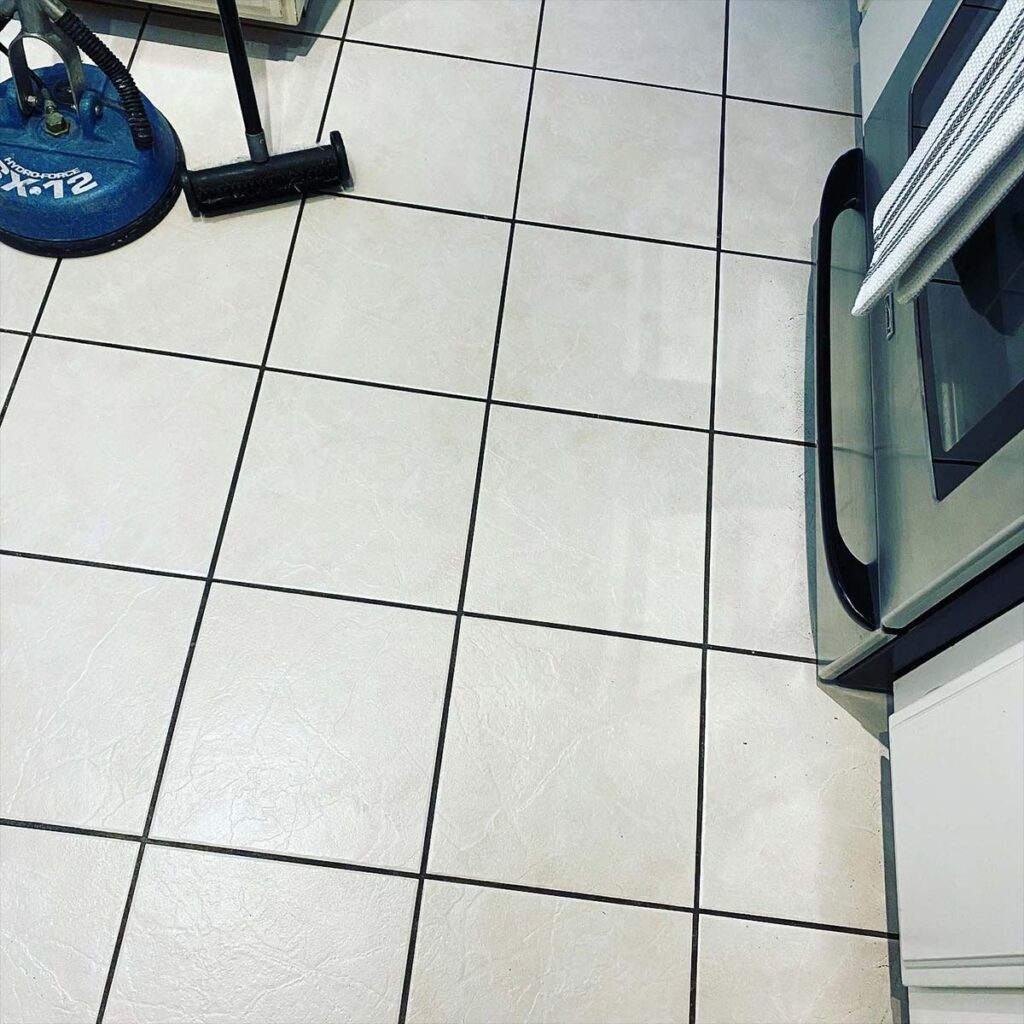Tips For Tile and Grout Cleaning
Tile and grout cleaning is a labor-intensive job that requires a lot of scrubbing. Routine maintenance can cut future scrubbing time, though. A basic cleaning process starts with an inspection to identify tough stains. Then, vacuum or sweep to remove loose dirt. Sweep again to remove surface dirt and sand, then mop with a microfiber rag or chamois-type mop.
1. Vinegar
Vinegar is a common household cleaner with many benefits, including cutting through dirt and grime. It also has antibacterial properties that can kill bacteria. If your grout is heavily soiled with soap scum and hard water stains, a vinegar and water solution is a simple way to remove these deposits.

To make this homemade cleaning solution, add equal parts of vinegar and warm water to a spray bottle. Mist the mixture onto a baking soda covered area of your grout and let it sit for a few minutes. Then, scrub with a brush and rinse with clean water.
Vinegar can erode unsealed grout, so it’s important to check that your grout is sealed on a regular basis. Rapinchuk suggests testing the grout to see if it will etch or discolor before using an acidic cleaner. If it does, you may need to regrout sooner. However, if your grout is well-sealed, it should be immune to deterioration from acidic cleaners.
2. Baking Soda
A household staple, baking soda (sodium bicarbonate) is an effective non-toxic cleaner. In addition to being an excellent leavening agent in recipes, it is a strong deodorizer and is even useful for removing stains from your grout lines.
Vinegar is acidic and will wear down or eat away at grout sealers over time, but it also works well in conjunction with other natural cleaning solutions for a powerful deep-cleaning. For example, you can make a spray solution by diluting vinegar 1:1 with water in a spray bottle and apply it to the surface before scrubbing.
Another option is to mix baking soda with hydrogen peroxide and dish soap. This mixture is highly effective because it combines the mildly abrasive properties of the baking soda with the whitening power of hydrogen peroxide and the stain-fighting power of dish soap. The resulting cleaning solution can be used for regular kitchen cleaning as well as to remove mold and mildew spores from bathroom tile.
3. Hydrogen Peroxide
The gritty grout that fills the gaps between kitchen and bathroom tiles can collect dirt that degrades its look over time. Vinegar’s acetic acid can corrode the grout, but hydrogen peroxide is safer and still provides some impressive cleaning power.
Like baking soda, hydrogen peroxide is a powerful oxidizer, lightening and brightening the discolored grout. It also disinfects, sanitizes and deodorizes.
Powdered oxygenated bleach also works well to brighten and deodorize the grout. Follow the instructions on the label and use it in a well-ventilated area. However, chlorine bleach may damage some tiles and grout color so spot test before applying to a larger surface.

4. Dish Soap
To get your grout looking its best, try mixing baking soda and hydrogen peroxide together to create a natural cleaner. The mildly abrasive baking soda helps lift dirt from the grout, while the hydrogen peroxide acts as a non-toxic bleach. Apply the mixture to your grout and let it sit for about ten minutes before scrubbing and rinsing.
Be sure to wear rubber gloves when applying your cleaner of choice. Bleach can sting your hands, and baking soda can burn them if it gets on them. Also, make sure to open windows to keep the area well-ventilated when working with chemicals. You can also purchase a commercial grout cleaner that is safe on your tile and grout.
https://www.google.com/maps?cid=16598579898065582400
